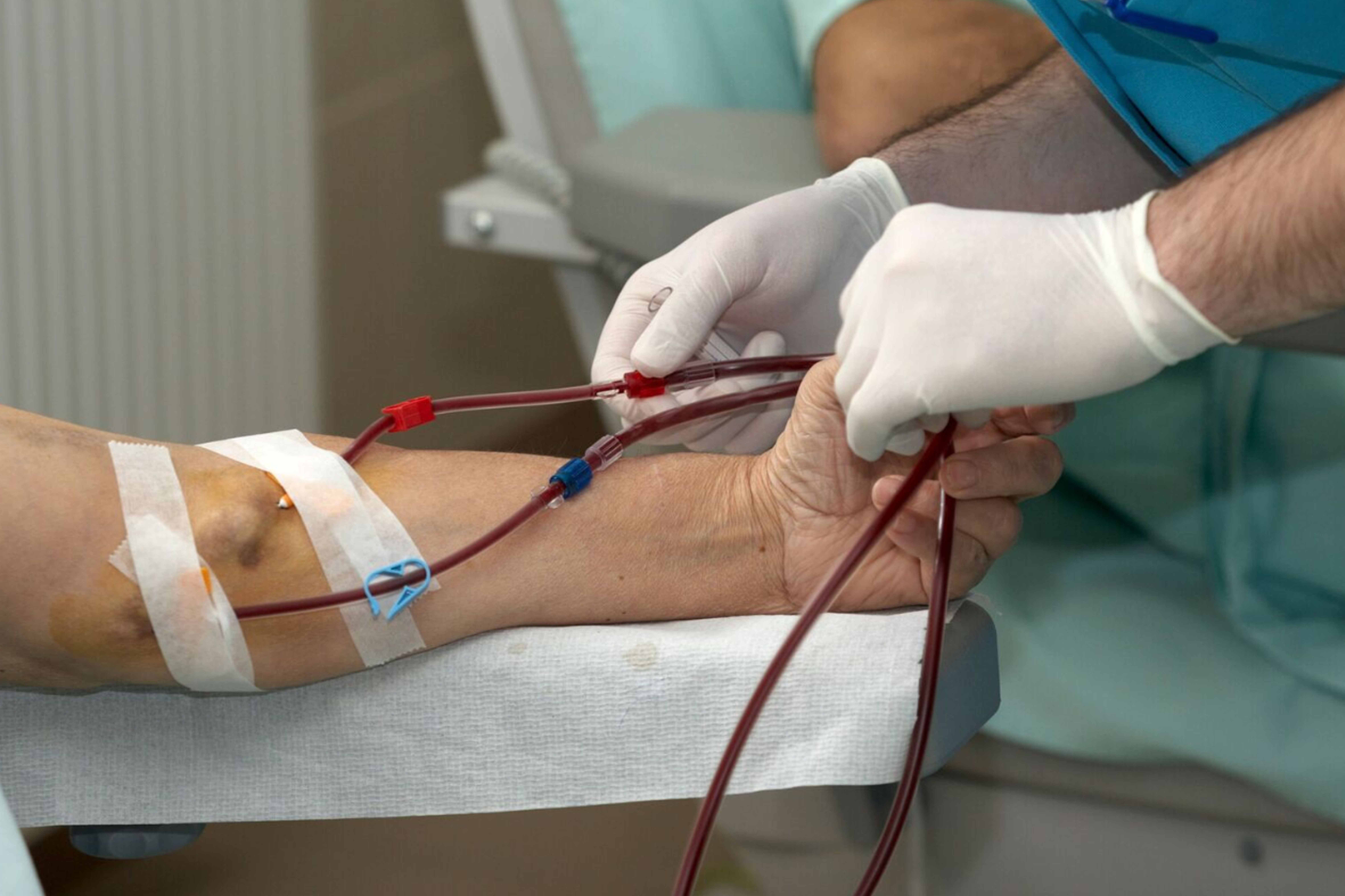- November 12, 2024
- Dr. Vaibhav
- 0
Hemodialysis Access Care

Hemodialysis access care is crucial for people who undergo hemodialysis, a treatment that filters and purifies the blood using a machine. Access points for hemodialysis include arteriovenous (AV) fistulas, AV grafts, and central venous catheters. Proper care of these access sites is essential to prevent complications, infections, and to ensure effective dialysis treatment.
A hemodialysis access, commonly referred to as vascular access, is one method to access the blood for hemodialysis. The access enables blood to drawn out from patient through soft tubes into the dialysis machine where it is cleaned it passes through a special filter known as a dialyzer. An access is placed a minor surgery.
Types of Hemodialysis Access
AV Fistula: Created surgically by connecting an artery directly to a vein, typically in the arm. It is the preferred method because it has a low risk of infection and generally lasts longer.
AV Graft: A synthetic tube is used to connect an artery to vein often used if veins aren’t suitable for a AV fistula. It requires extra care due to higher infection and clotting risks.
Central Venous Catheter: Inserted into large vein usually in the neck or chest. It’s used for short-term access or if a fistula or graft isn’t possible, but has a higher risk of infection and other complications.
General Hemodialysis Access Care Tips
Every type of access requires special care to ensure it is working properly and infection or clotting is minimized. Here’s some general guidance:
1. Clean and Dry Access Site
- Wash hands thoroughly before touching the access site
- Clean the access area with mild soap and water daily for AV fistulas and grafts
- Avoid lotion, creams, or perfumes on or around access site
2. Check for Signs of Infection
- Watch a redness, swelling, warmth, or drainage at the access site.
- Watch for fever or chills. Infection may be present.
- Contact your doctor immediately if experience any of these.
3. Check for Patency
- Look for a “thrill” or a bruit over the fistula or graft. A thrill is a feeling of vibration at the site, and a bruit is an intermittent whooshing sound. This indicates that blood is flowing appropriately.
- If you do not feel the thrill or hear the bruit, call your dialysis center immediately .
4. Limiting Pressure over the Access Site
- Avoid wearing tight-fitting garments, wrist-watches, or jewelry on the arm with the access site.
- Avoid resting on that arm if it goes over the fistula or graft.
- Avoid lifting heavy weights or any weight with that arm, as this can be damaging to the access.
5. Preventing Clotting over the Access Site
- As much as possible avoid any activity that might injure the access site.
- Rehydrate to maintain good flow
- Medications prescribed for you may help prevent clot formation if your healthcare provider recommends
6. Do Not Have Blood Pressure or Needle Sticks in Access Arm
- Blood pressure and injections should be taken in the opposite arm so that puncture at the access site does not occur.
